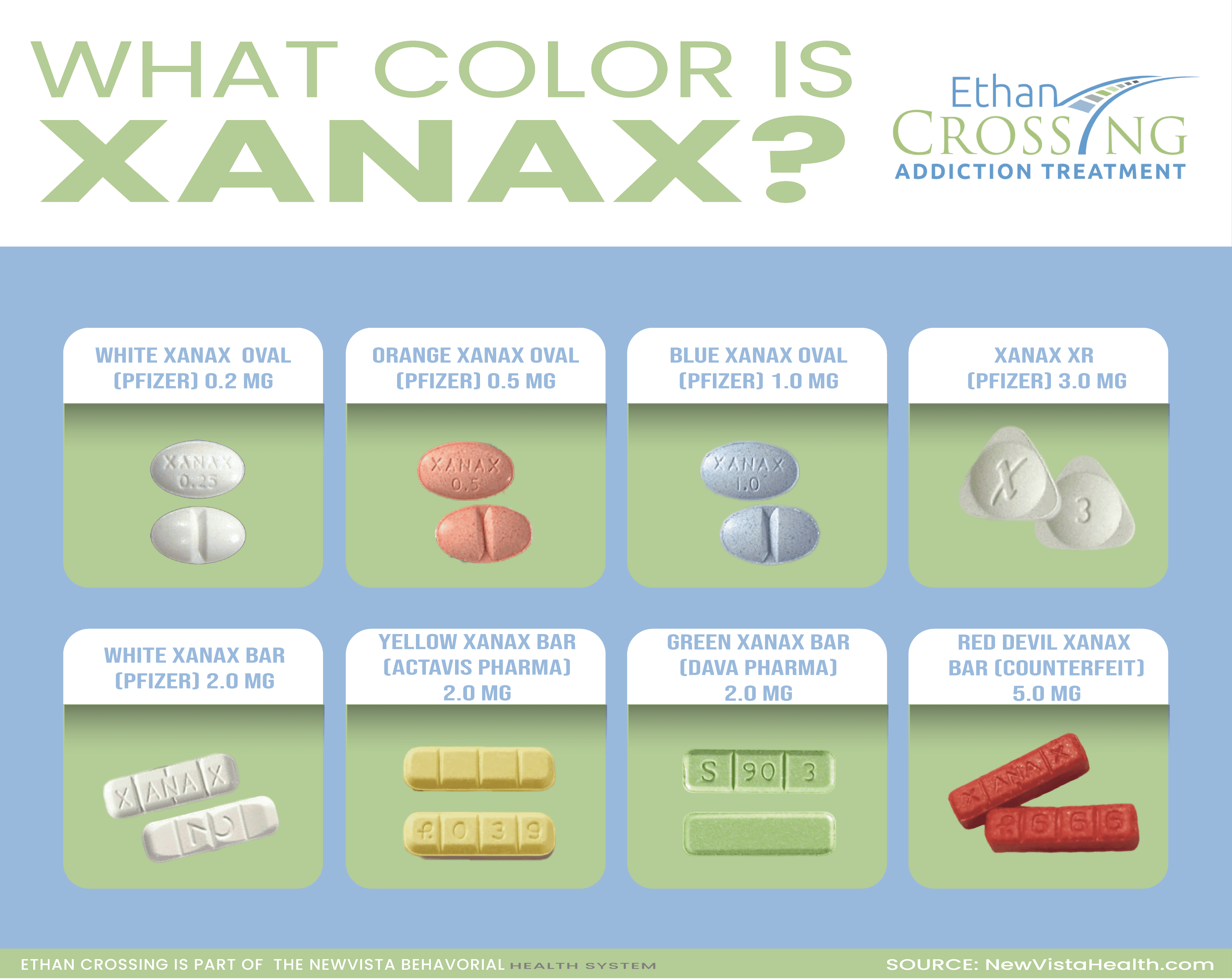What Is Xanax?
Xanax, a brand name for a drug called alprazolam, is used to treat anxiety and panic attacks. For millions who suffer from insomnia and panic attacks, Xanax is one of the most prescribed drugs by psychiatrists. Alprazolam is the generic name for Xanax and it belongs to a group of drugs called benzodiazepines. Benzodiazepines have been used successfully as a treatment option for insomnia and other disorders since the 1970s. “Benzos” work to enhance the effects of a certain natural chemical in the body called GABA.
Jump To Section
Is Xanax Effective?
Xanax provides fast relief of anxiety symptoms by slowing down activity in your central nervous system. This includes areas of the brain involved with sleep, mood, anxiety, and fear. Xanax works by increasing the amount of the neurotransmitter GABA in the brain to promote calmness and a relaxed feeling. It’s important to understand the effects that Xanax has on the brain because it greatly helps people who suffer from anxiety disorders so that they are able to remain calmer in a particularly stressful situation, help curb panic attacks and calm their body’s overactivity. When prescribed by a doctor, Xanax can be extremely effective.
What Is Xanax Used For?
The calming and sedating effects of benzodiazepines make them very useful for those suffering from a number of conditions, not just anxiety and panic attacks. Some of the other conditions that benzodiazepines like Xanax are used to treat are:
- Agitation
- Seizures
- Mania
- Muscle spasms
- Withdrawal from alcohol
- Difficulty sleeping
What Does Xanax Look Like?
Xanax pills can be oval or long and thin with different colors ranging from white to yellow, green, and red.
These bars have some of the highest dosages around. The highest one is the 3mg tablet with extended release. Often, they’ll have four sections, making it easier to break into pieces.
Here are some common Xanax pills with their corresponding dosage.
- White Rectangle – 2mg
- Green Xanax – 3mg
- Blue Round – 2mg
- Blue Oval – 1mg
- Four-sided Yellow – 1mg
- Oval Orange – 0.5mg
- Round Peach – 0.5mg
- Football-shaped Peach – 0.5mg
- Oval white – 0.25mg
Every manufacturer designs their Xanax pill’s in a different unique color and shape. These manufacturers use FDA-approved colors that are added when Xanax is made. Knowing these colors and shapes is important when it comes to addiction or finding out how many mg’s of alprazolam, the active ingredient in Xanax someone has taken.
If you suspect someone of Xanax addiction, you need only examine the colors of the bars. Check out some common bars and what they can do:
Is Xanax Addictive?
Xanax and other Benzodiazepines can become habit-forming when tolerance is developed. It is considered one of the most addictive benzodiazepine medications on the market today. The risks of becoming addicted are higher in people who take doses of 4 mg/day for longer than 12 weeks, but anyone who abuses the drug could be at risk for addiction. Daily use of benzodiazepines for six weeks or more will result in dependency for four in every 10 users.
This medication may be habit-forming if misused. It should not be used if you are allergic to alprazolam or similar medications, such as:
- chlordiazepoxide (Librium)
- clorazepate (Tranxene)
- diazepam (Valium)
- lorazepam (Ativan)
- Oxazepam
Side Effects of Xanax
Xanax has side effects, particularly during withdrawal or abuse, symptoms can be amplified.
- Tremors
- Lack of focus
- Confusion
- Memory problems
- Lack of inhibition
- Mood swings or irritability
- Loss of interest in sex
- Dizziness
- Dry mouth
- Erectile dysfunction
- Fatigue
- Nausea & Vomiting
- Coordination problems
- Seizures
- Shortness of breath
- Slurred speech
Xanax Withdrawal
Once dependency occurs, it may be difficult to stop taking Xanax. Even if there is a genuine willingness to start detoxing from Xanax, the symptoms of Xanax withdrawal are often so bad that they go right back on the Xanax for fear of experiencing those symptoms again. It’s important to seek help from a professional if you are struggling with Xanax abuse or Xanax withdrawal so that the process can be completed safely. Detox is just the first step on the road to recovery and developing the coping mechanisms necessary for long-term abstinence.
The History of Xanax
The first benzodiazepine drug was developed in 1955. Eventually, Xanax was patented in 1976 and FDA-approved in 1981. Xanax was developed by Upjohn Laboratories of Kalamazoo, Michigan in the late 1960s as a sleep aid. After testing, Upjohn realized its effects on anxiety, panic, and mood disorders.
During that time, other antidepressants were on the market (tricyclic antidepressants), which were more toxic than Xanax. It began being marketed for “panic disorders” and gained mainstream traction amongst psychiatrists. The Upjohn Company (now part of Pfizer) filed for and was granted a U.S. patent for Xanax in 1969. Eventually, Xanax (alprazolam), was eventually released to the drug market in 1981.
Get Help For Xanax Addiction
Treatment for Xanax addiction involves countering not just the physical addiction but also the mental addiction to lessen compulsion and cravings for more of the drug.
If you are struggling with a substance use disorder related to the overmedication of Xanax, we can help. Find a location near you and call us today.
Sources
No sources were found for this page.











